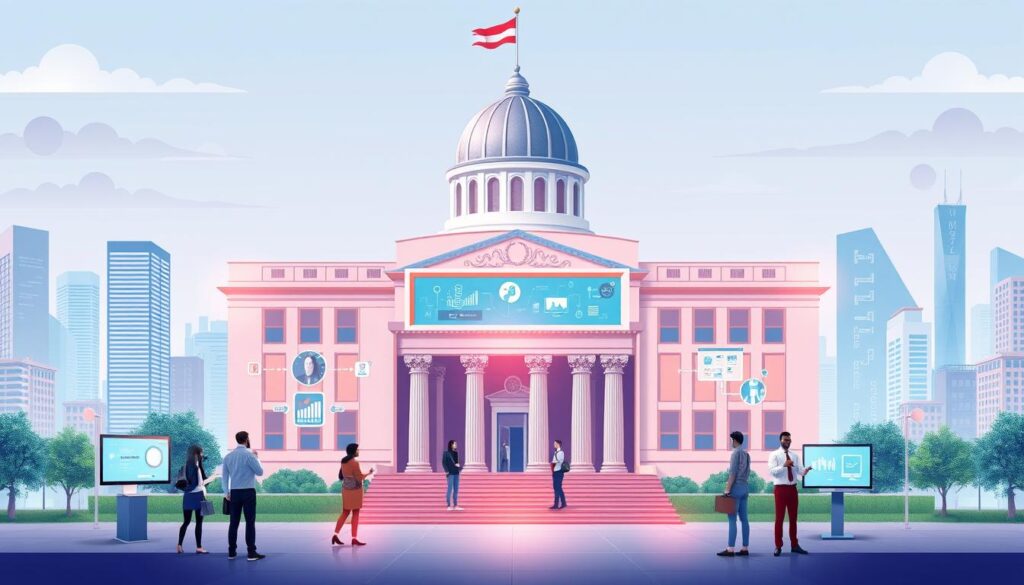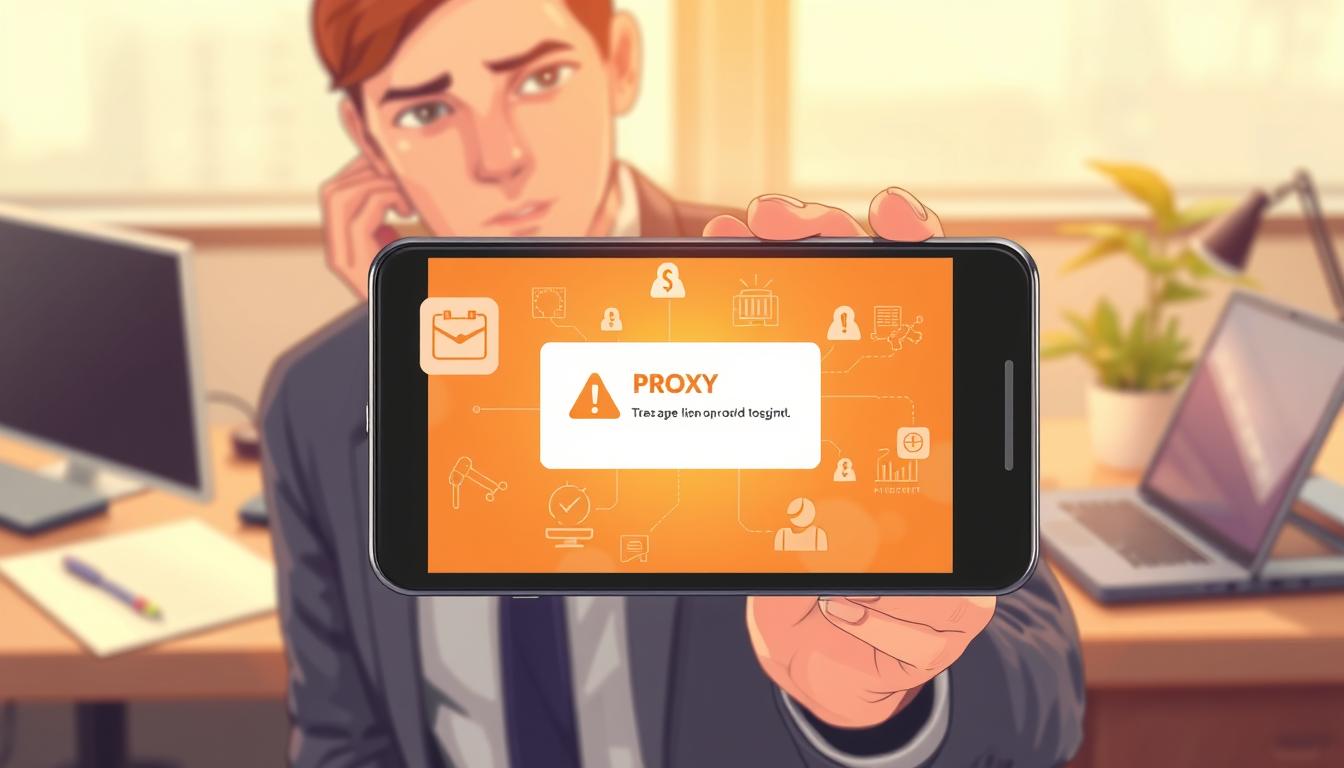FTC disclaimer: This post contains affiliate links and I will be compensated if you make a purchase after clicking on my link.
As a government agency, finding the right software is key. It helps streamline operations and improve citizen engagement. But, with many options, how do you choose the best? This guide will show you the top 11 government software solutions.
What makes the best government software stand out? We’ll look at the key features and benefits. These can make your agency more efficient, improve services, and meet regulations.
Key Takeaways
- Government software solutions are essential for driving digital transformation in the public sector
- These solutions must be both functional and user-friendly for both employees and citizens
- The article will review the top 11 government software solutions and their key features
- Purchasing decisions for government software are complex due to the use of public funds and regulatory requirements
- The article will provide insights on the benefits, features, and factors to consider when choosing the best government software
Introduction to Government Software
Government software is key for making things run smoother. It helps improve public services and makes things more efficient. Government Data Management and Secure Government Applications are vital. They help manage big data and processes well.
Why Government Software Matters
Government software meets the needs of public sector groups. It offers many benefits, like:
- Improved workflow automation and productivity
- Enhanced data management and compliance tracking
- Increased transparency and citizen engagement
- Compliance with strict regulatory requirements
Key Features to Look For
When looking at government software, focus on these key features:
- Workflow Automation: Makes tasks easier and boosts efficiency.
- Data Management: Keeps data safe and easy to access.
- Compliance Tracking: Makes sure rules are followed.
- Citizen Engagement: Improves public services and community involvement.
Choosing software with these features helps government agencies meet their needs. It also benefits employees and citizens.

| Feature | Benefit | Statistic |
|---|---|---|
| Workflow Automation | Time savings on annual reporting | 80% time savings |
| Procurement Streamlining | Less time building solicitations | 90% less time |
| Budget Development | Hours saved per year | 500 hours saved |
| Permit Approvals | Time to approve a building permit | 3 days |
“Government software should address unique regulatory requirements, ensure transparency, and manage large-scale data and processes effectively.”
Types of Government Software Solutions
Government agencies and cities face many challenges. They need to make things run smoother and keep people safe. Luckily, there are many Government Workflow Automation and Public Service Software options. These tools help solve different problems.
Administrative Management Tools
ERP systems help by linking data across departments. This gives a clear view of how resources are used. Tools for performance management track progress with data and reports.
Software for government accounting makes tasks like payroll easier. It also helps with managing grants. Records management software keeps track of important documents for sharing and compliance.
Public Safety Software
Procurement software makes buying and managing supplies easier. Work order systems help with maintenance and repairs. This improves service and uses resources better.
Citizen Relationship Management (CRM) software tracks interactions with citizens. It also offers self-service options for government services. E-government services platforms let people pay bills and renew licenses online. This makes it easier for citizens to get what they need.
These software options help governments work better. They make things more efficient and improve public services. By using the right Government Workflow Automation and Public Service Software, governments can be more open and responsive to their people.

Top 11 Government Software Picks
Government software solutions offer many choices for organizations. They help with tasks, engage citizens, and boost efficiency. Some top picks include Jotform Government, Accela, AccessE11, AccuFund, ClearPoint Strategy, GovOS, OpenGov, POSSE by Computronix, Salesforce Public Sector, and Workday.
1. Tyler Technologies
Tyler Technologies leads in Government Analytics Tools and Government Cloud Solutions. They have a wide range of products for the public sector. Their solutions help with finance, public administration, courts, and education.
They empower governments and schools to serve their communities better. They use innovative technologies to do this.
2. Granicus
Granicus is a key player in government software, focusing on Government Cloud Solutions. Their platform makes citizen engagement, legislative management, and digital services easy. Granicus helps agencies streamline, increase transparency, and work better with citizens.
| Software | Key Features | Pricing |
|---|---|---|
| Jotform Government |
| Starts at $39/month |
| Accela |
| Custom pricing based on requirements |
| AccessE11 |
| Starts at $50/user/month |

These are a few examples of government software solutions. They help public sector organizations with tasks, engage citizens, and improve performance. By using the right Government Analytics Tools and Government Cloud Solutions, agencies can become more efficient and serve their communities better.
Benefits of Using Government Software
Using Citizen-Centric Software changes how government agencies work. It brings a new level of Government Efficiency. Modern technology in government software helps public agencies work better, serve citizens more, and connect with them stronger.
Enhanced Efficiency
Government software makes things run smoother. It automates tasks and uses resources wisely. For example, GovPilot has worked for over 8 years on software for local governments. It uses cyber-secure cloud storage with Microsoft Azure.
The software also uses robotic process automation. It handles tasks like filing and collecting fees. This lets staff focus on important work.
Improved Citizen Engagement
Government software puts the citizen first. It offers online services and better ways to communicate. GovPilot makes software for each government department. It helps share information securely with many groups.
It also lets citizens and business owners apply online. This makes the citizen experience better.
By using Citizen-Centric Software and improving Government Efficiency, agencies can work better. They can manage data well and connect with citizens. This helps build trust and makes citizens more involved and informed.

Factors to Consider When Choosing Software
When picking software for government agencies, several key factors are important. Budget and how well it fits with current systems are major points. These can greatly affect the success of the software.
Budget Constraints
Government agencies have to watch their spending closely. The Federal Acquisition Regulations (FAR) section 12.101 says agencies should buy Commercial-Off-The-Shelf Software (COTS) first. This helps save money and cut down on costs.
Integration Capabilities
It’s vital for new software to work well with old systems. Many agencies use mainframe apps, making the switch hard. Checking if the software can work with current systems is key for a smooth transition.
| Software Provider | Public Sector Focus | Key Offerings |
|---|---|---|
| Infor | Tailored solutions for states, cities/counties, K12 districts, utilities, tribal and sovereign nations, transportation | Administrative management, public safety, cloud ERP |
| Sage | Nonprofit, foundation, association, faith-based, and government entities of all sizes | Financial management, payroll, HR, reporting |
| Tyler Technologies | Cloud ERP solutions exclusively for cities, towns, counties, K-12 schools, special districts, authorities | Administrative, public safety, utility management |
When looking at Government Software Selection and Public Sector Technology, agencies should think about a few things. Scalability, security, and following rules are important. So is how easy it is to use and the support from the vendor. By looking at these, agencies can pick software that meets their needs and grows with them.
Popular Features of Government Software
Government agencies handle a lot of data. They must follow rules and make detailed reports. Modern software helps them do this well.
Data Management
Government Data Analytics is key for smart decisions. Top software offers tools for safe and big data handling. It lets agencies store data in one place, make reports fast, and see data live.
Compliance Tracking
Keeping up with Regulatory Compliance Software is very important. Special parts in the software help agencies follow new rules. They also check important points and make reports ready for audits.
Reporting Tools
Good reporting tools help show government work clearly. The software lets agencies make special reports and show data in easy-to-understand ways. This helps show the government’s work is based on facts.
| Feature | Benefit |
|---|---|
| Robust Data Management | Centralized data storage, streamlined data entry, and real-time analytics |
| Compliance Tracking | Automated monitoring of regulatory requirements and audit-ready reporting |
| Advanced Reporting | Custom reporting, data visualization, and transparent communication of insights |
Using these features, government agencies can work better. They can serve their people better too.
Case Studies: Successful Software Implementations
Government software solutions have real-world results. Many case studies show how new technologies change the public sector. These stories show how Government Software Implementation and Public Sector Success Stories improve efficiency, save money, and engage citizens better.
City of Atlanta
The City of Atlanta had old systems that slowed down services. It worked with a top government software provider to update its tech. This move made admin tasks easier, data better, and operations more efficient.
State of California
The State of California tackled its complex rules with new software. It chose a cloud-based system to standardize work, manage user access, and track rules better. This big change boosted productivity and citizen involvement.
These stories show how government software can change things for the better. By matching tech with needs and planning well, public groups can do more with less. These examples offer lessons for others in the changing world of government tech.
| Case Study | Key Outcomes | Software Implemented |
|---|---|---|
| City of Atlanta |
| Leading government software provider |
| State of California |
| Flexible, cloud-based platform |
“The successful government software implementations in the City of Atlanta and the State of California showcase the transformative power of aligning technology with strategic business needs. These case studies serve as a valuable blueprint for other public sector organizations seeking to enhance efficiency, cost savings, and citizen engagement.”
Challenges Faced by Government Organizations
Government agencies try to use new digital tools but face big hurdles. They struggle with resistance to change and worries about data security.
Resistance to Change
Government groups are often cautious and slow to adopt new tech and ways of working. A recent survey found 51% of public sector groups see silos as a big obstacle. This fear of the new, lack of digital skills, or fear of changing old ways can cause this.
Data Security Concerns
Keeping data safe is a big worry for government agencies. With more cyber threats, they must protect data and follow strict rules. This is hard when old systems are still used.
To beat these challenges, government groups need a wide plan. They should train employees, encourage new ideas, and use cloud tech for better security and work flow.
“Only 12% of government customers state that government services meet their needs, while 75% expect digital government services to perform at the level of private sector institutions.”
By tackling these Government Technology Challenges and focusing on Public Sector Cybersecurity, agencies can do better. They can engage citizens more, work more efficiently, and serve their communities better.
Future Trends in Government Software
The public sector is changing fast. Two big trends are increased adoption of AI and automation and cloud-based solutions.
Adoption of AI and Automation
Government agencies see AI and automation as game-changers. They help make better decisions, improve services, and make things run smoother. With Government AI Solutions, they can do tasks faster, understand big data, and make smarter choices.
This move to AI-powered government software means things will get better. It will make things more efficient, cut down on mistakes, and give everyone a better experience.
Cloud-Based Solutions
The move to Cloud Government Software is also big. Cloud solutions are flexible, grow with you, and save money. They let governments update their tech without buying new stuff.
Cloud solutions also make data safer and easier to share. This helps different parts of government work together better. It’s key for a citizen-centric experience.
| Trend | Key Benefits |
|---|---|
| Adoption of AI and Automation |
|
| Cloud-Based Solutions |
|
As government agencies keep up with these trends, they’re looking forward to a bright future. Government AI Solutions and Cloud Government Software will make things better. They will make the public sector more efficient, citizen-focused, and ready for change.
How to Transition to New Government Software
Switching to new government software needs a solid plan. This plan should include good training and support for employees. It also should use a step-by-step approach to roll out the software.
Training and Support
Getting employees ready for new software is key. Agencies should offer detailed training. This can be through workshops, online lessons, and help resources.
This focus on Government Software Adoption and Public Sector Training helps employees use the software well. It boosts efficiency and productivity.
Phased Implementation Strategies
Introducing new software bit by bit helps manage change. Start with a small group, test, and then expand. This way, you can make adjustments as needed.
This method lets you fine-tune the rollout. It makes the transition smoother and keeps operations running smoothly.
| Key Strategies for Phased Implementation | Benefits |
|---|---|
| Identifying and engaging key stakeholders | Ensures buy-in and support from all affected parties |
| Setting clear goals and milestones | Provides a roadmap for successful implementation |
| Continuously evaluating progress and making adjustments | Allows for refinement and optimization throughout the transition |
Using good training and a step-by-step plan helps government agencies switch to new software smoothly. This approach boosts confidence and efficiency.
Conclusion: Finding the Best Government Software
Finding the right government software is a big task. You need to think about what your agency needs, what’s out there, and what you want to achieve. Look at your current ways of working, figure out what you really need, and talk to vendors. This way, you can pick software that helps your public sector work better.
Next Steps for Government Agencies
Begin by looking at how you work now and where you can get better. Think about your budget, rules you must follow, and how big and complex your team is. This helps you find software that fits your needs perfectly.
Final Thoughts on Selecting Software
The right software can really change things for the better. It can make your work more efficient, open, and better for citizens. By focusing on what you need, looking at what’s out there, and choosing the right partner, you can make the most of Government Software Evaluation and Public Sector Technology Solutions. Keep your goals in mind, and you’ll find the best software for your agency’s success.








